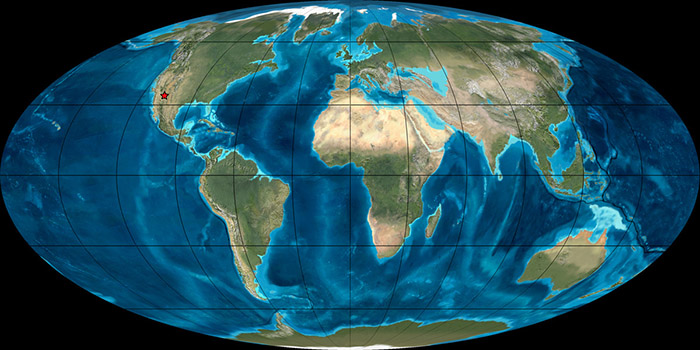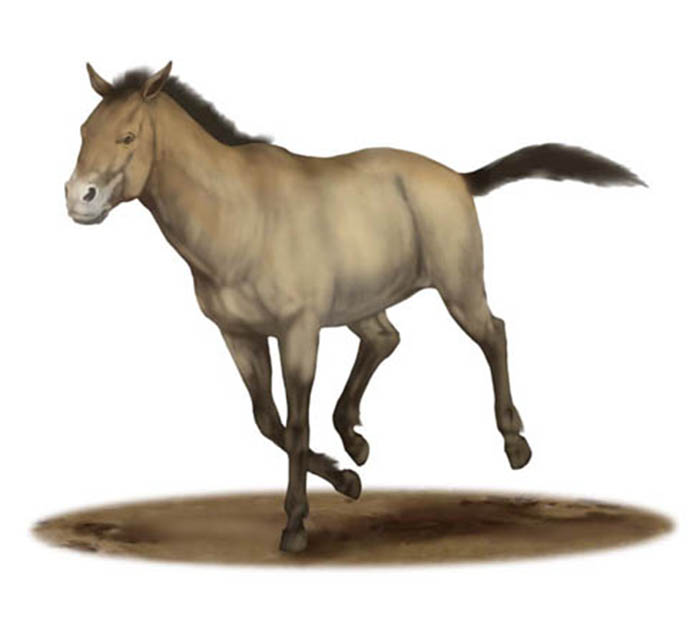
Map of Continents Through Time

Time in History: 10 million years ago (Miocene Period)
Environment Parameters & Graphs of Carbon & Oxygen
|
 |
Question of the Day:
How did the modern ecosystems we find today come to be?
Key Concepts
Dispatch
Some life forms are better able to adapt to their surroundings, whether it’s favorable environmental conditions, or an absence of predators. But on the run today one can’t help but wonder about the additional attributes that help us succeed, the ones that are harder to quantify, things like sheer will. Today the environment favored the runners; the wind was at the youth ambassadors back all morning, the clouds left the land cool, but there was also their drive to set a record, a goal beyond their basic requirements for the day. The Youth Ambassadors ran 52 kilometre (32.3 miles) today. It’s the greatest distance any i2P youth expedition team has ever covered. And it’s a fitting accomplishment on a day when we are acknowledging the rise of mammals. The youth are running on terrain created 10 million years ago, a time when mammals realized their potential with the dinosaurs gone. They grew, they multiplied, they filled the land and they remain today, though we must show some pause with our celebration, because while humans are now the mammals on the top of the food chain, we may be in the midst of another great extinction, one which is thought to be of our creation.
| Daily Video | Expert Video |
|---|---|
Coming Soon! |
Photos of the Day
Coming Soon!
Character of the Day: Pliohippus 
With the non-avian dinosaurs extinct, mammals proliferated in the Southwestern United States. Pliohippus, a descendant of a perissodactyl ancestor (like modern rhinos and tapirs) is an extinct mammal from the "horse family." Pliohippus was similar in appearance to Equus – the precursor to the modern horse - but had two long extra toes on both sides of the hoof. The long and slim limbs of Pliohippus reveal a quick-footed steppe animal. Pliohippus stood approximately 1.25 metres tall, similiar to the modern horse. Also like the modern horse, Pliohippus was a grazer that fed on steppe grasses of the North American plains it inhabited and is symbolic of the dramatic climatic and vegetational change that occurred at this time. Many regions in the world began to noticeably dry out, creating vast areas of grasslands that drove the evolution of new fauna, including, in Africa, the ancestors of modern humans. Fossils of the Pliohippus have been found at many late Miocene localities in Colorado, the Great Plains of the USA (Nebraska and the Dakotas) and also Canada.
To learn more about the Pliohippus and the Rise of Mammals click below:
http://en.wikipedia.org/wiki/Pliohippus
http://www.flmnh.ufl.edu/natsci/vertpaleo/fhc/plioh.htm
http://en.wikipedia.org/wiki/Evolution_of_the_horse
http://cpluhna.nau.edu/Places/places.htm
http://geology.gsapubs.org/content/38/7/671.full
http://science.nationalgeographic.com/science/prehistoric-world/rise-mammals/
http://www.pbs.org/wgbh/nova/nature/extraordinary-lives-of-crocs.html
Youth Ambassador Activity
Yesterday saw the end of the dinosaurs – they all went extinct except for one obscure group called the Neornithiformes - The dinosaurs who evolved into the birds we see today. The extinction of the dinosaurs left vacancies in the world's ecosystems, which could be filled by other species. As we have seen with prior extinction events, the animals that survived are best able to adapt to the conditions of their new world. Prior to the demise of the dinosaurs, this area was a lush coastal plain, today as we move forward to 10 million years ago we are in a high desert like plateau much like this land is today. As you run today I want you to consider how this change in environment occurred and what it was about mammals that allowed them to proliferate.